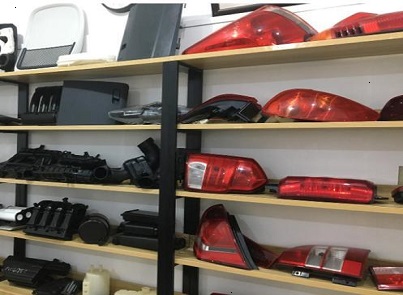What is the Process of Hot Plate Welding Plastic?

Hot plate welding is a widely used method for joining thermoplastic parts together. It is a technique that utilizes heat to fuse two or more pieces of plastic, creating a strong and durable bond. This process is extensively applied in industries such as automotive, aerospace, electronics, packaging, and medical.
How Does Hot Plate Welding Work?
The hot plate welding process involves several steps, each crucial for achieving a successful weld:
- Preparation: Before starting the welding process, it is essential to prepare the plastic parts. This includes ensuring they are clean and free from any contaminants that could interfere with the bonding process. The surfaces to be joined should have a good surface finish for optimal adhesion.
- Clamping: The two plastic parts that need to be joined are securely clamped together. This ensures proper alignment and contact between the surfaces to be welded, creating a tight joint.
- Heating: A heated metal plate, commonly referred to as the hot plate, is brought into contact with the joint area. The hot plate transfers heat to the plastic, causing it to soften and become pliable. The temperature is carefully controlled to avoid overheating or damaging the plastic.
- Melting: As the plastic softens, pressure is applied to the joint area. This pressure helps promote the flow of melted plastic and ensures a strong bond between the two parts. The amount of pressure and the duration of the heating process are determined by the specific materials being welded.
- Cooling: After a sufficient amount of time, the hot plate is removed, and the joint is allowed to cool. Cooling solidifies the plastic, creating a sturdy connection between the parts. The cooling process is crucial for ensuring the long-term strength and stability of the weld.
- Finishing: Once the joint has cooled, any excess plastic material is trimmed or removed to achieve the desired final shape. This step ensures a clean and aesthetically pleasing appearance of the welded parts.
Advantages of Hot Plate Welding
Hot plate welding offers several advantages over other plastic welding techniques:
- Compatibility: Hot plate welding can be used with a wide range of thermoplastics, including polyethylene, polypropylene, PVC, and ABS. This versatility allows manufacturers to join different types of plastics, expanding the possibilities for creating complex assemblies.
- Large part capability: Hot plate welding is suitable for joining large or irregularly shaped parts that may be difficult to weld using other methods. The heating element can be designed to match the shape of the parts, ensuring uniform heating and consistent weld quality. This makes hot plate welding a versatile solution for diverse applications.
- Aesthetically pleasing welds: Hot plate welding produces clean and visually appealing welds. The heat from the metal plate creates a smooth and uniform bond between the parts, eliminating the need for additional finishing or post-welding processes. This not only saves time and costs but also enhances the overall quality and perceived value of the plastic parts.
- Strength and durability: The resulting welds from hot plate welding are typically strong and durable, with mechanical properties comparable to the original plastic material. This ensures the longevity and reliability of the assembled products.
- Process control: Hot plate welding allows for precise control of the heating and cooling cycles, ensuring optimal fusion and avoiding overheating or insufficient bonding. Manufacturers can carefully tailor the process parameters to match the specific material properties and design requirements.
In recent years, there have been significant advancements in hot plate welding technology. These developments have further improved the process's efficiency, reliability, and versatility. For example, the integration of temperature sensors and feedback control systems allows for more precise temperature regulation, ensuring consistent and optimal welding conditions. Additionally, the use of advanced materials for the heating element, such as ceramic composites, has enhanced heat transfer efficiency and durability.
Furthermore, automation and robotics have been integrated into hot plate welding systems, enabling high-speed and consistent weld production. This not only increases productivity but also reduces human error and ensures repeatability. The combination of improved technology and automation has made hot plate welding an even more attractive option for manufacturers seeking efficient and high-quality plastic joining solutions.
In addition to its technical advancements, hot plate welding also contributes to sustainability efforts. By creating strong and durable bonds between plastic parts, it reduces the need for additional fasteners or adhesives that can contribute to waste and environmental impact. The process also minimizes the risk of material failure or separation over time, extending the lifespan of the assembled products.
In conclusion, hot plate welding is a reliable and efficient method for joining plastic parts. Its ability to create strong bonds, work with various plastic materials, and produce aesthetically pleasing welds makes it a valuable technique in various industries. Continuous advancements in hot plate welding technology further enhance its performance and expand its applications in the ever-evolving field of plastic fabrication. Manufacturers can leverage these advancements to achieve superior quality, increased productivity, and cost-effectiveness in their production processes, while also contributing to sustainable manufacturing practices.
So, the next time you come across the need to join plastic parts, consider hot plate welding as a reliable and versatile solution that delivers strong, durable, and aesthetically pleasing results.
See more:





